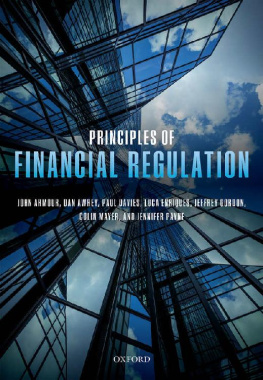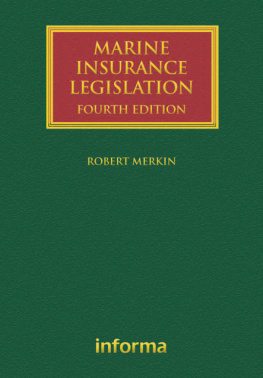John F. Manning - Legislation and Regulation: Cases and Materials
Here you can read online John F. Manning - Legislation and Regulation: Cases and Materials full text of the book (entire story) in english for free. Download pdf and epub, get meaning, cover and reviews about this ebook. year: 2017, publisher: West Academic Publishing and Foundation Press, genre: Politics. Description of the work, (preface) as well as reviews are available. Best literature library LitArk.com created for fans of good reading and offers a wide selection of genres:
Romance novel
Science fiction
Adventure
Detective
Science
History
Home and family
Prose
Art
Politics
Computer
Non-fiction
Religion
Business
Children
Humor
Choose a favorite category and find really read worthwhile books. Enjoy immersion in the world of imagination, feel the emotions of the characters or learn something new for yourself, make an fascinating discovery.
- Book:Legislation and Regulation: Cases and Materials
- Author:
- Publisher:West Academic Publishing and Foundation Press
- Genre:
- Year:2017
- Rating:3 / 5
- Favourites:Add to favourites
- Your mark:
- 60
- 1
- 2
- 3
- 4
- 5
Legislation and Regulation: Cases and Materials: summary, description and annotation
We offer to read an annotation, description, summary or preface (depends on what the author of the book "Legislation and Regulation: Cases and Materials" wrote himself). If you haven't found the necessary information about the book — write in the comments, we will try to find it.
Legislation and Regulation: Cases and Materials — read online for free the complete book (whole text) full work
Below is the text of the book, divided by pages. System saving the place of the last page read, allows you to conveniently read the book "Legislation and Regulation: Cases and Materials" online for free, without having to search again every time where you left off. Put a bookmark, and you can go to the page where you finished reading at any time.
Font size:
Interval:
Bookmark:

EDITORIAL BOARD
Robert C. Clark
Directing Editor
Distinguished Service Professor and Austin Wakeman Scott
Professor of Law and Former Dean of the Law School
Harvard University
Daniel A. Farber
Sho Sato Professor of Law and Director, Environmental Law Program
University of California at Berkeley
Heather K. Gerken
J. Skelly Wright Professor of Law
Yale University
Samuel Issacharoff
Bonnie and Richard Reiss Professor of Constitutional Law
New York University
Herma Hill Kay
Barbara Nachtrieb Armstrong Professor of Law and
Former Dean of the School of Law
University of California at Berkeley
Harold Hongju Koh
Sterling Professor of International Law and
Former Dean of the Law School
Yale University
Saul Levmore
William B. Graham Distinguished Service Professor of Law and
Former Dean of the Law School
University of Chicago
Thomas W. Merrill
Charles Evans Hughes Professor of Law
Columbia University
Robert L. Rabin
A. Calder Mackay Professor of Law
Stanford University
Carol M. Rose
Gordon Bradford Tweedy Professor Emeritus of Law and Organization and
Professional Lecturer in Law
Yale University
Lohse Chair in Water and Natural Resources
University of Arizona
University Casebook SerieS
Legislation and Regulation
CASES AND MATERIALS
THIRD EDITION
John F. Manning
Morgan and Helen Chu Dean and Professor of Law
Harvard Law School
Matthew C. Stephenson
Professor of Law
Harvard Law School

The publisher is not engaged in rendering legal or other professional advice, and this publication is not a substitute for the advice of an attorney. If you require legal or other expert advice, you should seek the services of a competent attorney or other professional.
University Casebook Series is a trademark registered in the U.S. Patent and Trademark Office.
2010 THOMSON REUTERS/FOUNDATION PRESS
2013 by LEG, Inc. d/b/a West Academic Publishing
2017 LEG, Inc. d/b/a West Academic
444 Cedar Street, Suite 700
St. Paul, MN 55101
1-877-888-1330
Printed in the United States of America
ISBN: 978-1-63460-647-9
The editors dedicate this book
to their families
PREFACE
This casebook is designed for a first-year course on Legislation and Regulation. Harvard Law School introduced such a course as part of a more general package of reforms to the first-year curriculum in September 2006. The purpose of this course is to teach students both how federal statutory and regulatory law is made, and how judges and administrative interpreters construe these legal materials. The course also serves as a foundation for courses in the upper-level curriculum, including Administrative Law, Environmental Law, Labor Law, Securities Law, Employment Law, Bankruptcy, Taxation, and numerous other courses in which statutes and regulations are central.
The casebook consists of five chapters. Chapters One and Two focus on the legislation element of the course, introducing students to the theory and practice of statutory interpretation. Chapter One introduces classic themes and controversies in statutory interpretation, such as the conflict between a statutes text and apparent purpose, different approaches to construing statutory language, and the appropriate role of extrinsic materials (particularly legislative history) in statutory interpretation. Chapter Two continues the exploration of the theory and practice of statutory interpretation by examining the role of canons of construction (both semantic and substantive).
Chapters Three and Four focus on the regulation element of the course, introducing students to the legal architecture that both enables and constrains regulatory policymaking by administrative agencies. Chapter Three explores the constitutional framework of the modern administrative state and presents the core doctrines and practices that structure the relationship between the agencies and the President and Congress. Chapter Four deals with the administrative rulemaking process and related topics, focusing in particular on the legal apparatus established by the Administrative Procedure Act (APA) and the judicial decisions construing that statute.
Chapter Five integrates the legislation and regulation aspects of the course by focusing on judicial review of agencies interpretations of the statutes that they administer. Chapter Five thus revisits many of the issues covered in Chapters One and Two, but in the context of statutes interpreted in the first instance by administrative agencies. This gives students an opportunity to consider the appropriate allocation of interpretative authority between courts and agencies, as well as a chance to consolidate their understanding of some of the core concepts of interpretation found in Chapters One and Two. It also lends itself to review and further consideration of issues pertaining to the appropriate role and function of agencies in our system of government (the central theme of Chapters Three and Four).
A few words on our general approach to constructing this casebook: First, the two of us sought to meld somewhat different perspectives. One of the editors (Manning) takes a more doctrinal, structural, and historical approach to the material. The other (Stephenson) approaches many of the same questions from a more pragmatic, instrumentalist, and social scientific perspective. Each editor is friendly to the others approach, and we tried to craft a book that blended a broad range of doctrinal, political science, historical, economic, and philosophical perspectives on the cases and materials we selected. Second, we erred on the side of including more of the principal cases, making the excerpted cases somewhat longer than in other casebooks. Our experience in teaching these materials has been that cutting the cases too much can make the cases harder to understand by disrupting the flow or omitting key elements of the argument. (One style point: In our editing of the principal cases, we indicate with ellipses where we were omitting substantive material, but we generally do not indicate where we omit citations.) Third, we have tried, in the notes following the cases, to give the students context for understanding how the case fits in with the fabric of the law more generally and with related material in the casebook. In so doing, we have tried to make the notes as modular as possible, permitting instructors to assign the ones that most interest them. Finally, we have tried to lay out basic concepts in a way that makes the book accessible for first-years, but we have sought to make the treatment in-depth enough to engage upper level students as well.
This casebook has been the product of tremendous effort by a large number of people. Neither the book nor the Harvard Legislation and Regulation course would exist without the vision and leadership of Elena Kagan and Martha Minow, who spearheaded the curricular reform and oversaw the development of the course, or without the invaluable contributions of our colleagues David Barron, Jody Freeman, Todd Rakoff, Mark Tushnet, and Adrian Vermeule, who participated in this process. We also benefitted tremendously from our colleagues who spoke to us during the early development of these materials, used them in draft form, or provided feedback on the first and second editions of the casebook: Jonathan Adler, Rachel Barkow, Jack Beermann, Susan Davies, Einer Elhauge, Jody Freeman, Jake Gersen, Caitlyn Halligan, Kristin Hickman, Roderick Hills, Sally Katzen, David Lewis, David Marcus, Anne Joseph OConnell, Todd Rakoff, Samuel Rascoff, Christina Rodriguez, Adam Samaha, Peter Strauss, Adrian Vermeule, and Alexander Volokh. We thank our outstanding research assistants on all three editions: Katie Booth, Natascha Born, Thomas Burnett, Stanley Chen, Ryan Doerfler, Avishai Don, Jeremy Feigenbaum, Parimal Garg, Jeanne Jeong, Janet Kim, Brad King, Maria Lacayo, Chunghang Joshua Lee, Noah Marks, Matthew Muntean, Jason Neal, Leif Overvold, Ryan Park, Stacie Payne, Paul Ray, Colleen Roh, Andrew Rohrbach, Benjamin Snyder, Clara Spera, David Tassa, Alice Wang, Jordan Wish, and Maile Yeats-Rowe. They performed heroic feats of substantive analysis, proofreading, and cite-checking, and their excellent work saved us from error and vastly improved the quality of the book. We are grateful to John Bloomquist, Tessa Boury, Jim Coates, JoAnn Grinstead, Cathy Lundeen, Greg Olson, Ryan Pfeiffer, and Robb Westawker of Foundation Press for their good advice, excellent editing, and strong support on the casebooks three editions. We are also grateful to Kaitlin Burroughs, Sarah Davitt, Jennifer Minnich, and Margaret Flynn for their vigilant and unflagging faculty assistance in the preparation of these materials. Last but not least, we thank the hundreds of students in our Legislation and Regulation classes who have road tested these materials and whose comments made them better.
Font size:
Interval:
Bookmark:
Similar books «Legislation and Regulation: Cases and Materials»
Look at similar books to Legislation and Regulation: Cases and Materials. We have selected literature similar in name and meaning in the hope of providing readers with more options to find new, interesting, not yet read works.
Discussion, reviews of the book Legislation and Regulation: Cases and Materials and just readers' own opinions. Leave your comments, write what you think about the work, its meaning or the main characters. Specify what exactly you liked and what you didn't like, and why you think so.

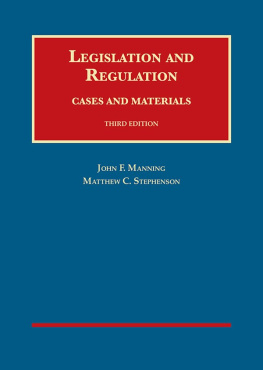

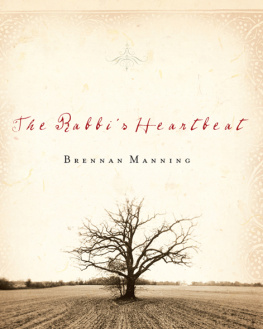
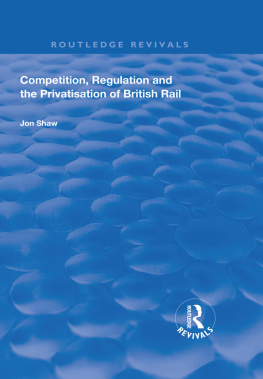
![Richard A. Epstein - Cases and Materials on Torts (Aspen Casebook) [Connected Casebook]](/uploads/posts/book/244338/thumbs/richard-a-epstein-cases-and-materials-on-torts.jpg)
